RARE* WWII Era Imperial Japanese Navy Map - Occupation of the Dutch East Indies - Battle of the Java Sea

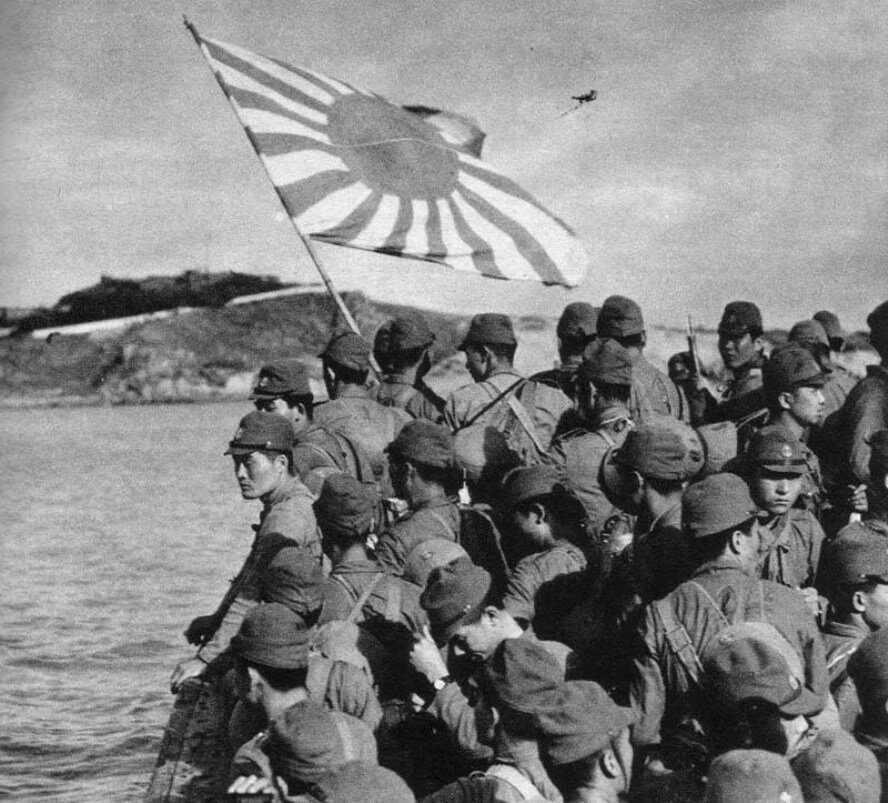




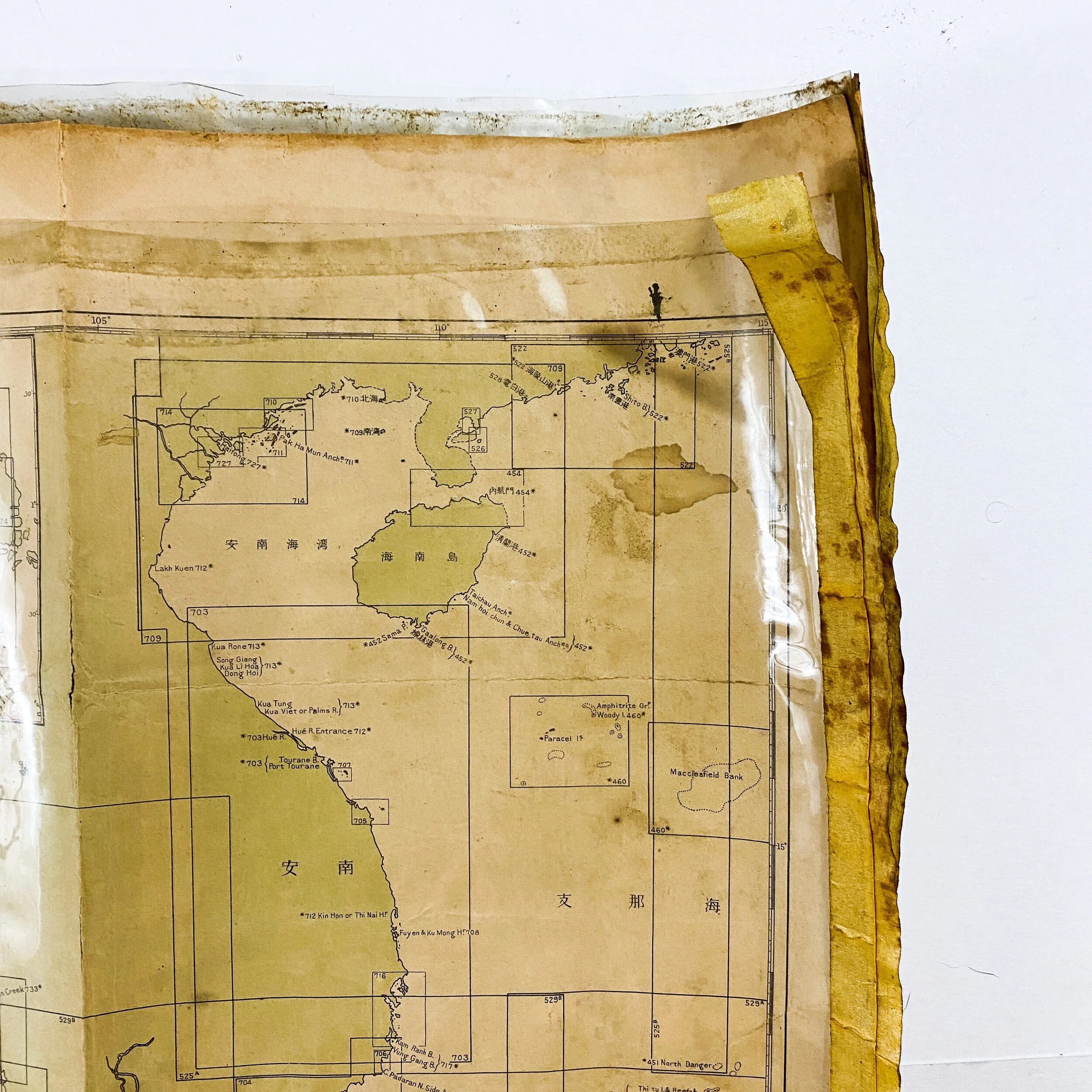
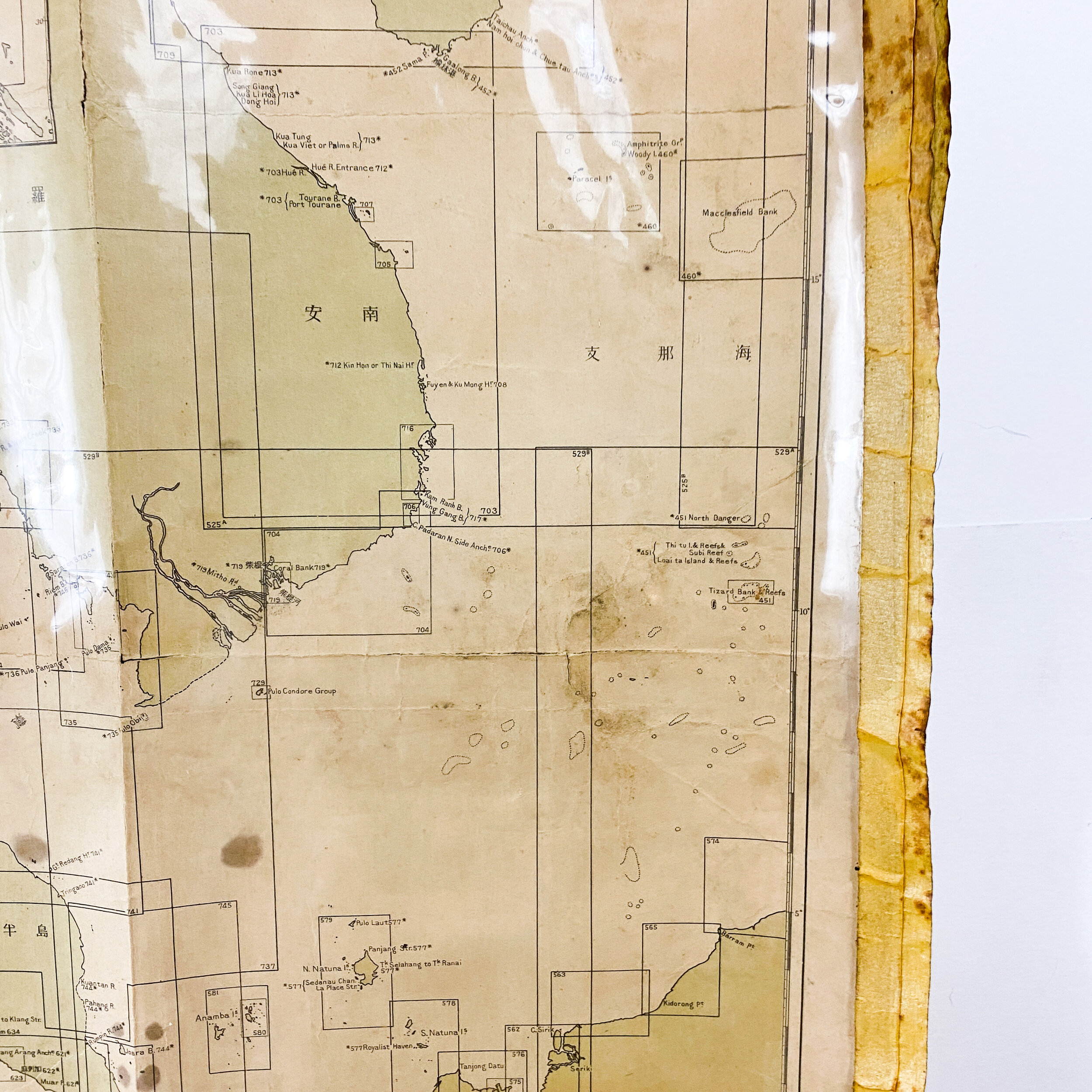


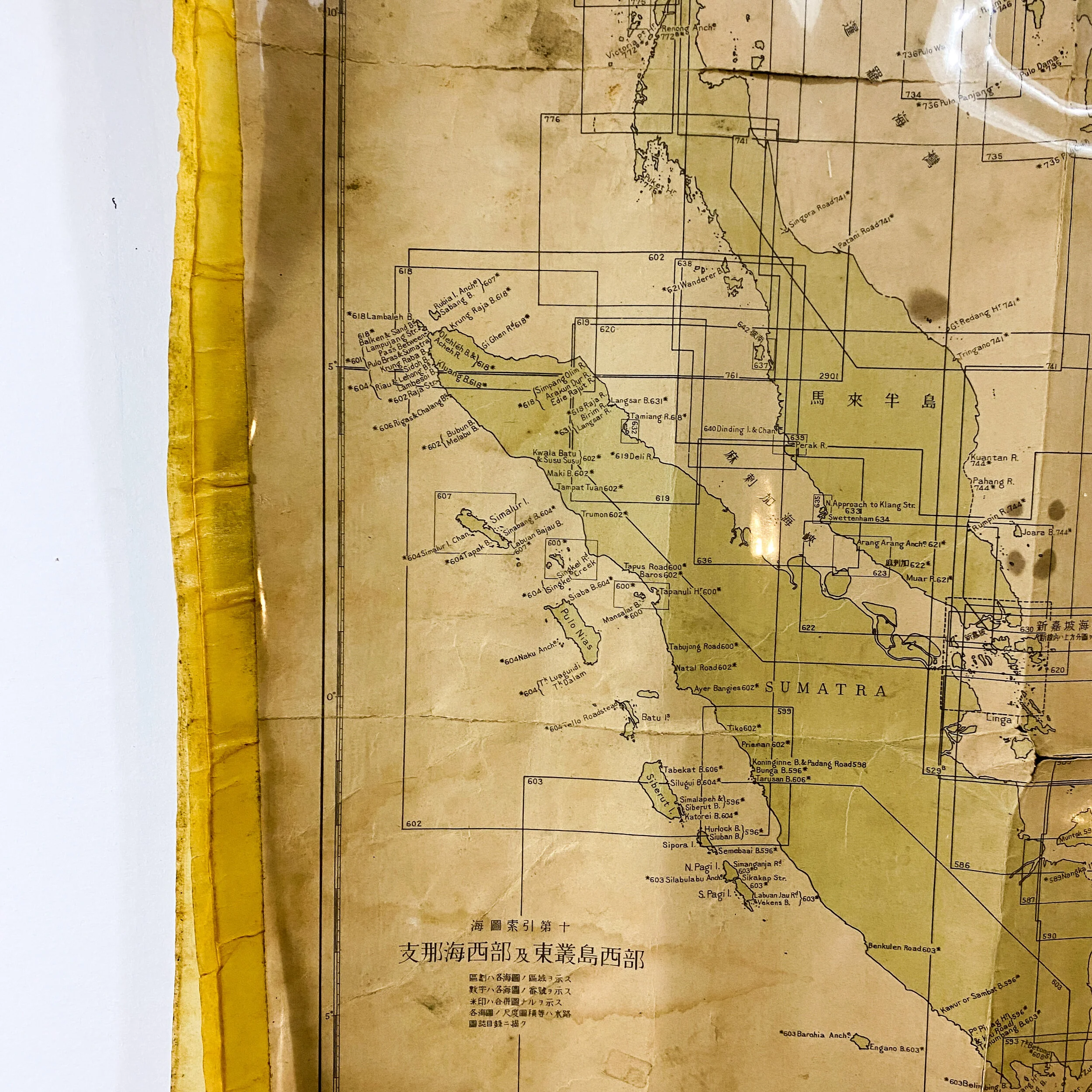
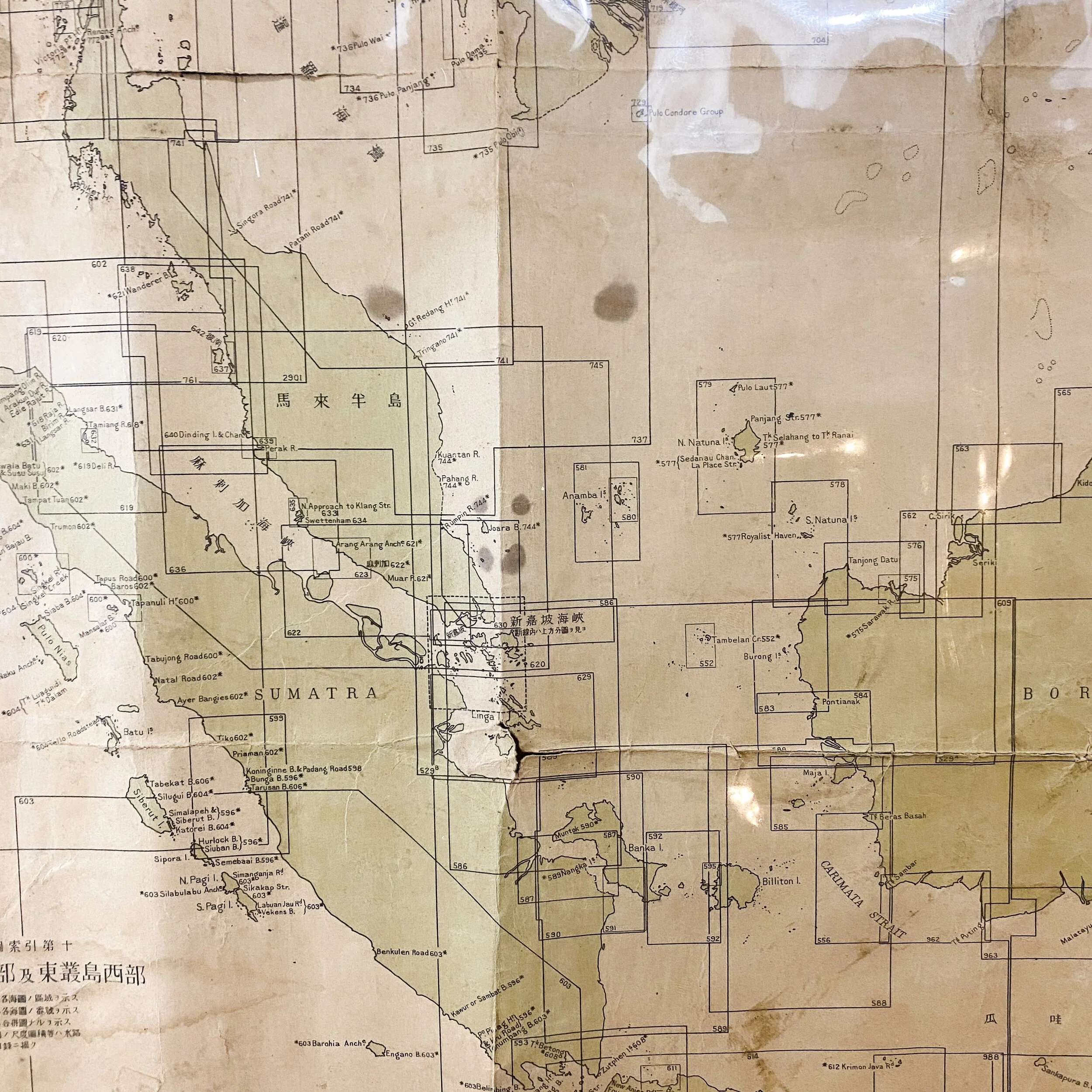
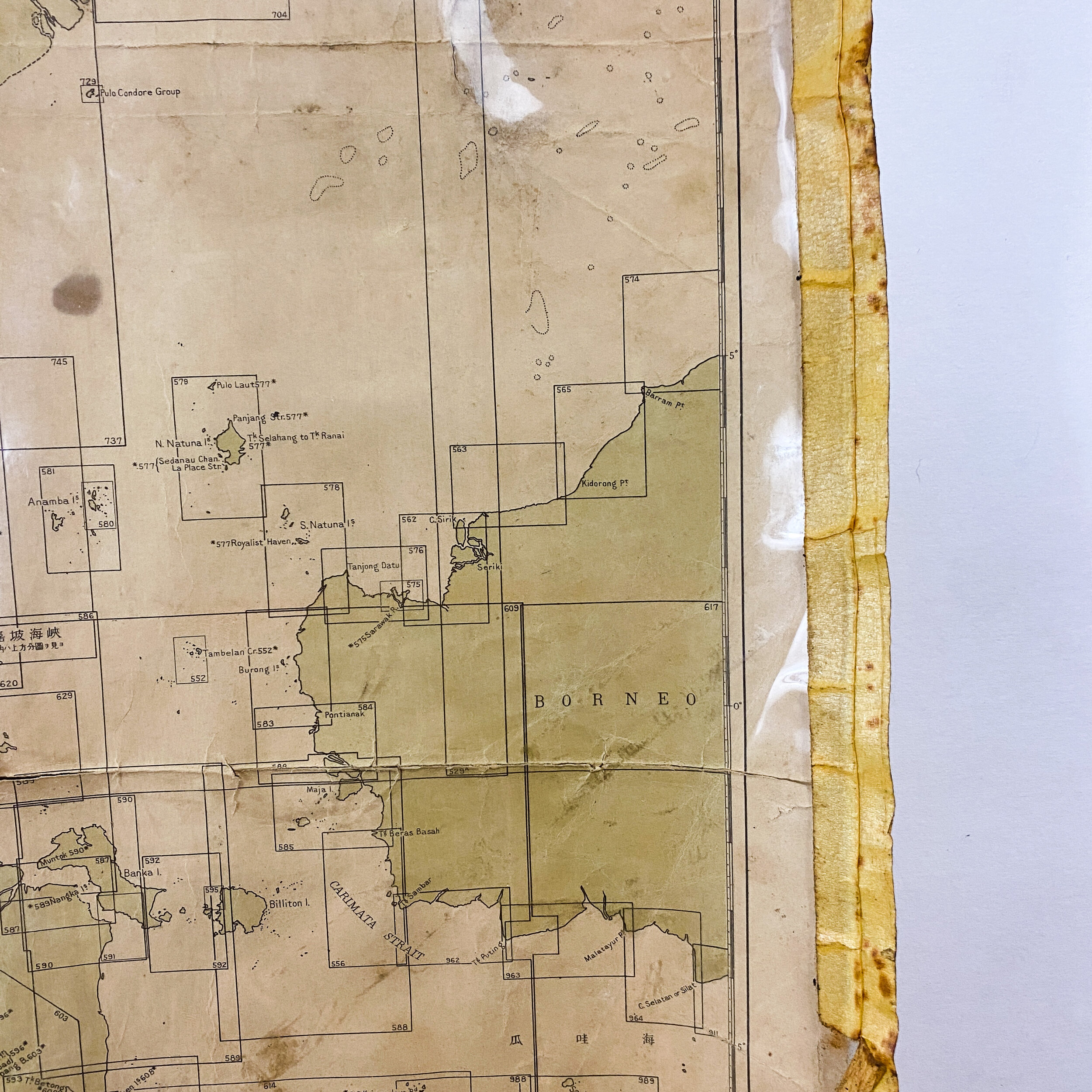
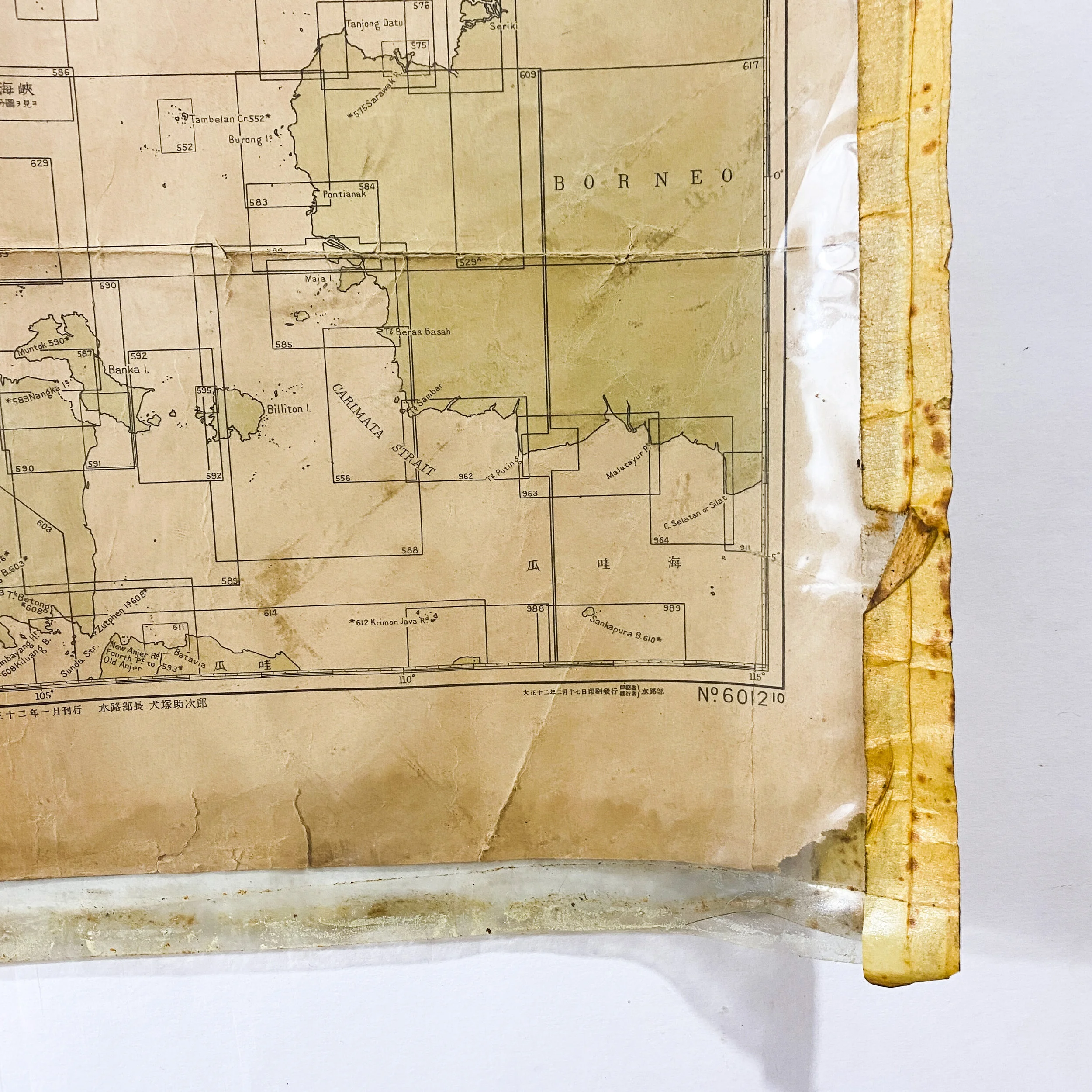







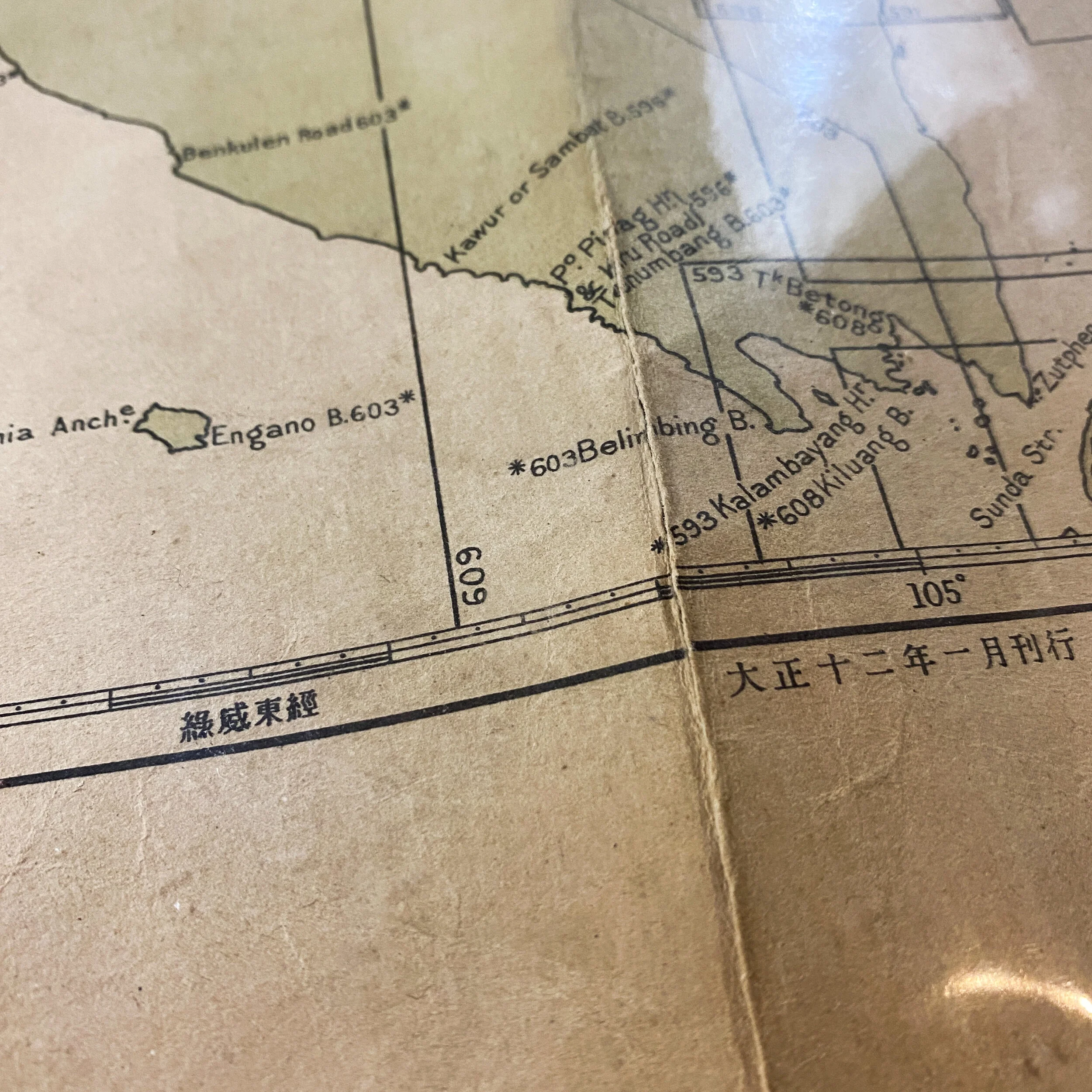







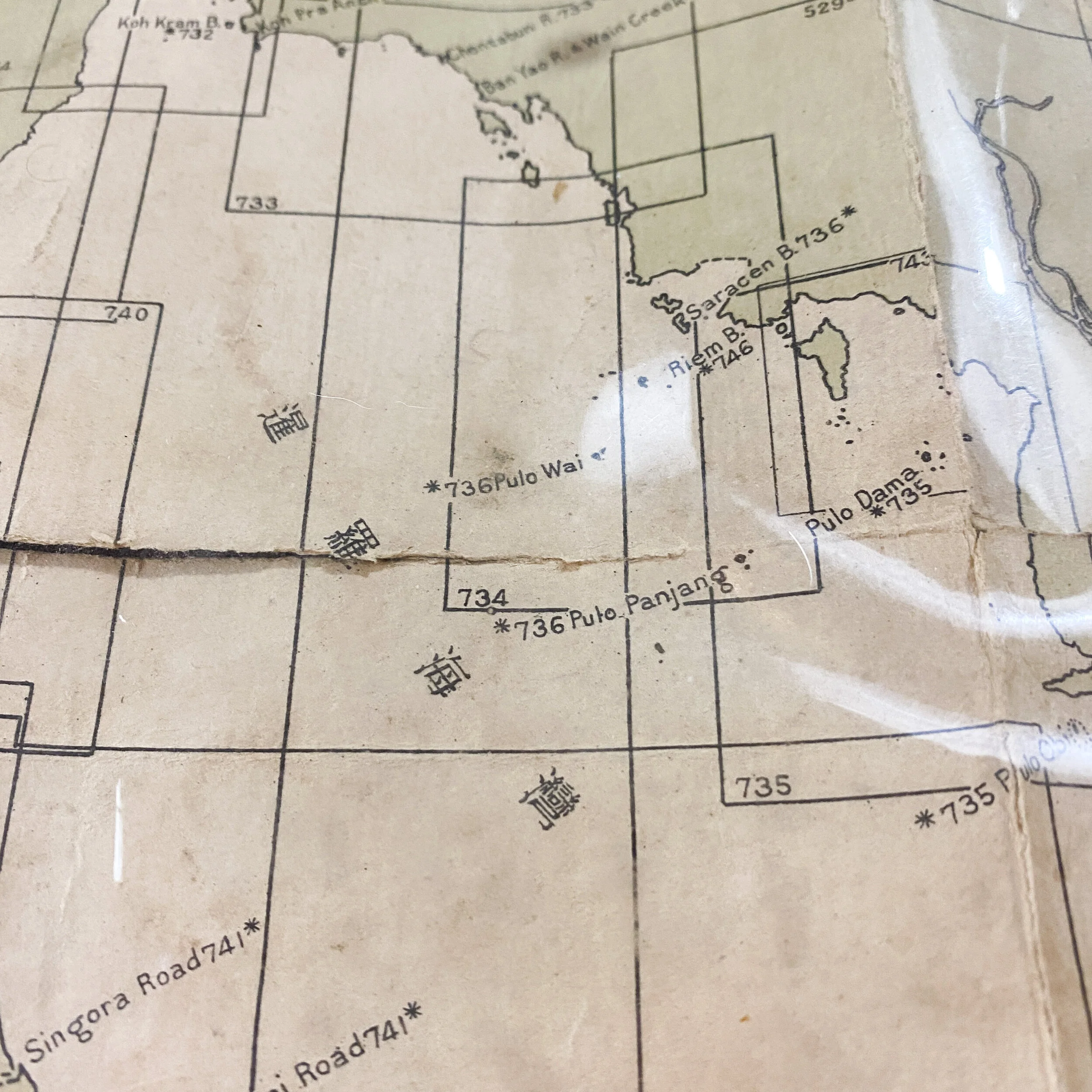
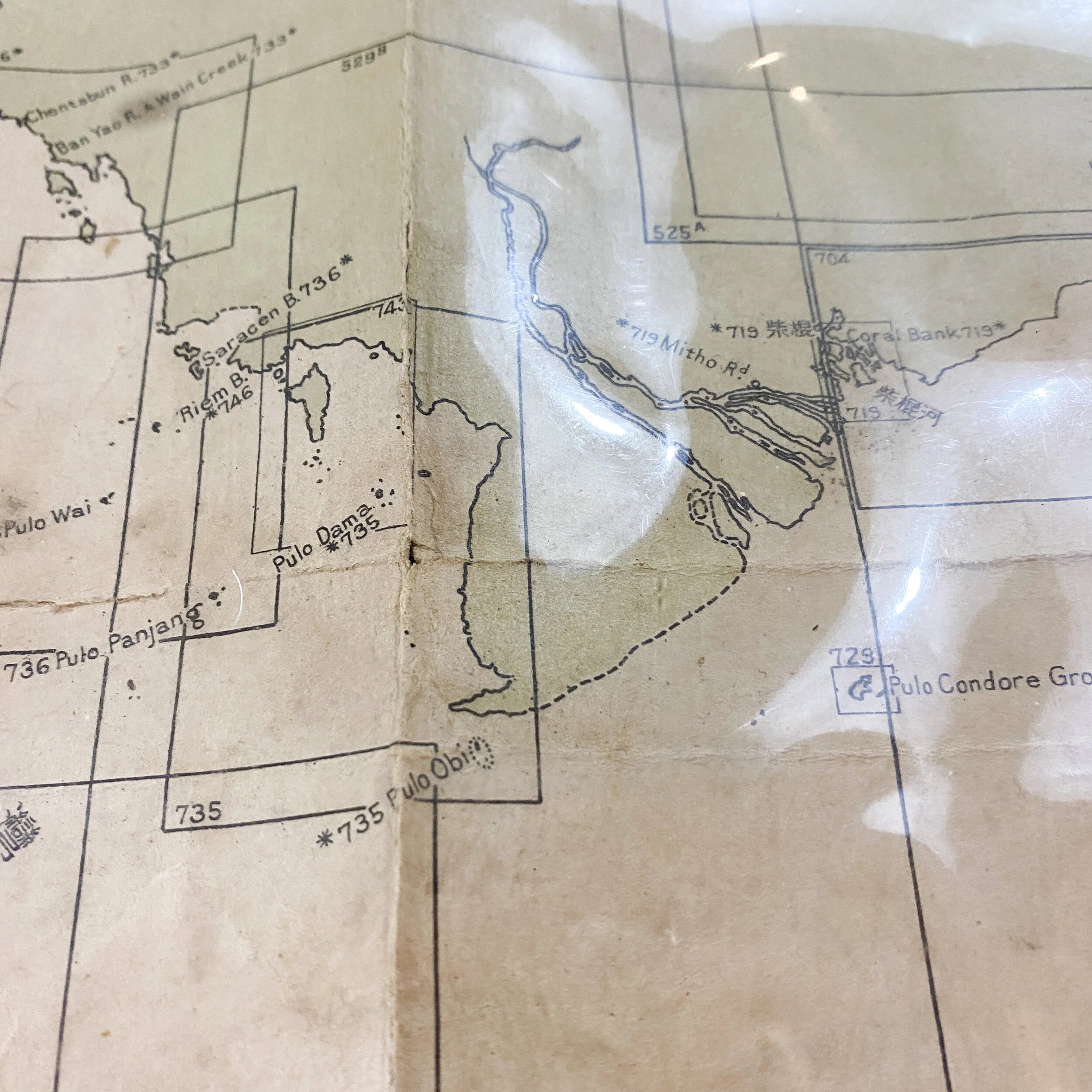





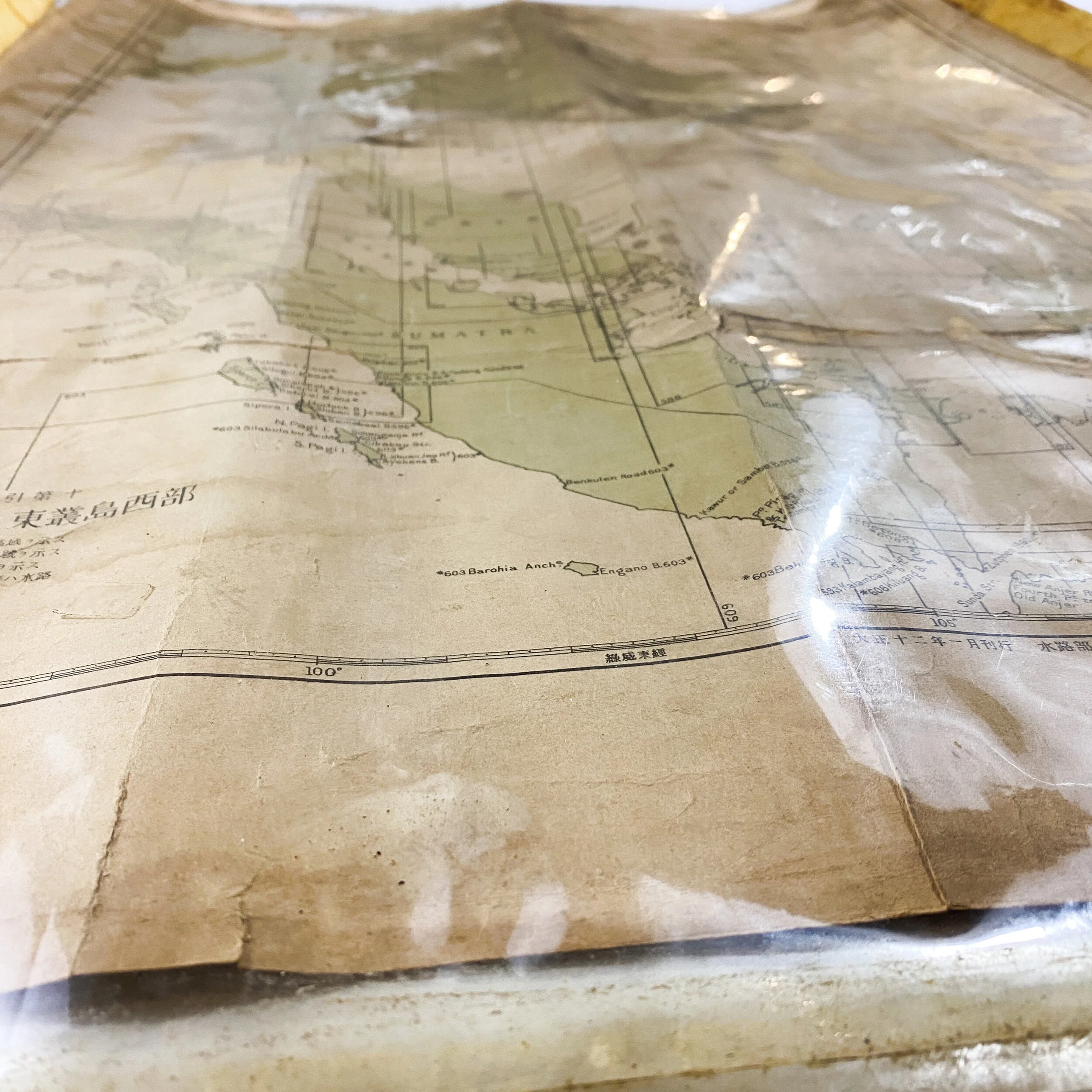












RARE* WWII Era Imperial Japanese Navy Map - Occupation of the Dutch East Indies - Battle of the Java Sea
Size: 22.5 x 31.5 inches
This extremely rare and waterproofed World War II Japanese Naval map shows some of the most infamous Islands of the Dutch East Indies invaded by the Japanese Navy and Eastern Invasion Force during the early stages of WWII. This map played a pivotal role as the Japanese began their invasion and occupation of the Dutch East Indies and later the famous Battle of the Java Sea.
This map shows heavy use and wear but still contains the extremely rare original waterproof coverings on both sides, with the original tape still visible. This was done to keep the map dry from the harsh conditions of the Pacific Ocean environment, hot climates, and salty air. This Japanese Naval map shows the islands of Sumatra, Borneo, Malaya and the infamous Java Sea. The Battle of the Java Sea was a decisive naval battle of the Pacific campaign of World War II where the Allied navies suffered a disastrous defeat at the hand of the Imperial Japanese Navy, on 27 February 1942, and in secondary actions over successive days. The aftermath of the battle included several smaller actions around Java, including the smaller but also significant Battle of Sunda Strait. These defeats led to Japanese occupation of the entire Dutch East Indies.
Roughly translated, this map it titled “Sea Area Index - Western China Sea and Western East Pacific Islands”. With the symbol of the Imperial Japanese Navy located in the top left corner of the map, the backside of the map also contains extremely large hand-painted kanji in what appears to be a black paint/ink. This map was most likely utilized by the Japanese Imperial Navy in this particular section of the Pacific Theater. While we will never know the full context of what Japanese Naval Officers used this map, it did provide a strategical advantage II Japanese Imperial forces, sailor, and troops upon occupying and holding the various Islands and ocean. Some of the most notable Japanese ships seen during the famous battles in this area were tthe Japanese task force commanded by Rear-Admiral Takeo Takagi, consisted of two heavy (Nachi and Haguro) and two light cruisers (Naka and Jintsū) and 14 destroyers (Yūdachi, Samidare, Murasame, Harusame, Minegumo, Asagumo, Yukikaze, Tokitsukaze, Amatsukaze, Hatsukaze, Yamakaze, Kawakaze, Sazanami, and Ushio) including the 4th Destroyer Squadron under the command of Rear Admiral Shoji Nishimura
The Occupation:
The invasion in early 1942 was swift and complete. By January 1942, parts of Sulawesi and Kalimantan were under Japanese control. By February, the Japanese had landed on Sumatra where they had encouraged the Acehnese to rebel against the Dutch. On 19 February, having already taken Ambon, the Japanese Eastern Task Force landed in Timor, dropping a special parachute unit into West Timor near Kupang, and landing in the Dili area of Portuguese Timor to drive out the Allied forces which had invaded in December. On 27 February, the Allied navy's last effort to contain Japan was swept aside by their defeat in the Battle of the Java Sea. From 28 February to 1 March 1942, Japanese troops landed on four places along the northern coast of Java almost undisturbed. The fiercest fighting had been in invasion points in Ambon, Timor, Kalimantan, and on the Java Sea. In places where there were no Dutch troops, such as Bali, there was no fighting. On 9 March, the Dutch commander surrendered along with Governor General Jonkheer A.W.L. Tjarda van Starkenborgh Stachouwer.
Battle of the Java Sea:
On 23 January 1942, a force of four American destroyers attacked a Japanese invasion convoy in Makassar Strait as it approached Balikpapan in Borneo. On 13 February, the Allies fought unsuccessfully—in the Battle of Palembang—to prevent the Japanese from capturing the major oil port in eastern Sumatra. On the night of 19/20 February, an Allied force attacked the Eastern Invasion Force off Bali in the Battle of Badung Strait. Also on 19 February, the Japanese made two air raids on Darwin, on the Australian mainland, one from carrier-based planes and the other by land-based planes. The destruction of Darwin rendered it useless as a supply and naval base to support operations in the East Indies.
he Japanese amphibious forces gathered to strike at Java, and on 27 February 1942, the main Allied naval force, under Doorman, sailed northeast from Surabaya to intercept a convoy of the Eastern Invasion Force approaching from the Makassar Strait. The Eastern Strike Force, as it was known, consisted of two heavy cruisers (HMS Exeter and USS Houston), three light cruisers (Doorman's flagship HNLMS De Ruyter, HNLMS Java, HMAS Perth), and nine destroyers (HMS Electra, HMS Encounter, HMS Jupiter, HNLMS Kortenaer, HNLMS Witte de With, USS Alden, USS John D. Edwards, USS John D. Ford, and USS Paul Jones).
The Japanese task force protecting the convoy, commanded by Rear-Admiral Takeo Takagi, consisted of two heavy (Nachi and Haguro) and two light cruisers (Naka and Jintsū) and 14 destroyers (Yūdachi, Samidare, Murasame, Harusame, Minegumo, Asagumo, Yukikaze, Tokitsukaze, Amatsukaze, Hatsukaze, Yamakaze, Kawakaze, Sazanami, and Ushio) including the 4th Destroyer Squadron under the command of Rear Admiral Shoji Nishimura. The Japanese heavy cruisers were much more powerful, armed with ten 8-inch (203 mm) guns each, and superb torpedoes. By comparison, Exeter was armed only with six 8-inch guns and only six of Houston's nine 8-inch guns remained operable after her aft turret had been knocked out in an earlier air attack.
The Allied force engaged the Japanese in the Java Sea, and the battle raged intermittently from mid-afternoon to midnight as the Allies tried to reach and attack the troop transports of the Java invasion fleet, but they were repulsed by superior firepower. The Allies had local air superiority during the daylight hours, because Japanese air power could not reach the fleet in the bad weather. The weather also hindered communications, making cooperation between the many Allied parties involved—in reconnaissance, air cover and fleet headquarters—even worse than it already was. The Japanese also jammed the radio frequencies. Exeter was the only ship in the battle equipped with radar, an emerging technology at the time.
The battle consisted of a series of attempts over a seven-hour period by Doorman's Combined Striking Force to reach and attack the invasion convoy; each was rebuffed by the escort force with heavy losses being inflicted on the Allies.
The fleets sighted each other at about 16:00 on 27 February and closed to firing range, opening fire at 16:16. Both sides exhibited poor gunnery and torpedo skills during this phase of the battle. Despite her recent refit (with the addition of modern Type 284 gunnery control radar), Exeter's shells did not come close to the Japanese ships, while Houston only managed to achieve a straddle on one of the opposing cruisers. The only notable result of the initial gunnery exchange was Exeter being critically damaged by a hit in the boiler room from an 8-inch shell. The ship then limped away to Surabaya, escorted by Witte de With.
The Japanese launched two huge torpedo salvoes, consisting of 92 torpedoes in all, but scored only one hit, on Kortenaer. She was struck by a Long Lance, broke in two and sank rapidly after the hit.
Electra—covering Exeter—engaged in a duel with Jintsū and Asagumo, scoring several hits but suffering severe damage to her superstructure. After a serious fire started on Electra and her remaining turret ran out of ammunition, abandon ship was ordered. On the Japanese side, only Asagumo was forced to retire because of damage.
The Allied fleet broke off and turned away around 18:00, covered by a smoke screen laid by the four destroyers of U.S Destroyer Division 58 (DesDiv 58). They also launched a torpedo attack but at too long a range to be effective. Doorman's force turned south toward the Java coast, then west and north as night fell in an attempt to evade the Japanese escort group and fall on the convoy. It was at this point the ships of DesDiv 58—their torpedoes expended—left on their own initiative to return to Surabaya.
Shortly after, at 21:25, Jupiter ran onto a mine and was sunk, while about 20 minutes later, the fleet passed where Kortenaer had sunk earlier, and Encounter was detached to pick up survivors.
Doorman's command, now reduced to four cruisers, again encountered the Japanese escort group at 23:00; both columns exchanged fire in the darkness at long range, until De Ruyter and Java were sunk by one devastating torpedo salvo. Doorman and most of his crew went down with De Ruyter; only 111 were saved from both ships.
Only the cruisers Perth and Houston remained; low on fuel and ammunition, and following Doorman's last instructions, the two ships retired, arriving at Tanjung Priok on 28 February.
Although the Allied fleet did not reach the invasion fleet, the battle did give the defenders of Java a one-day respite.